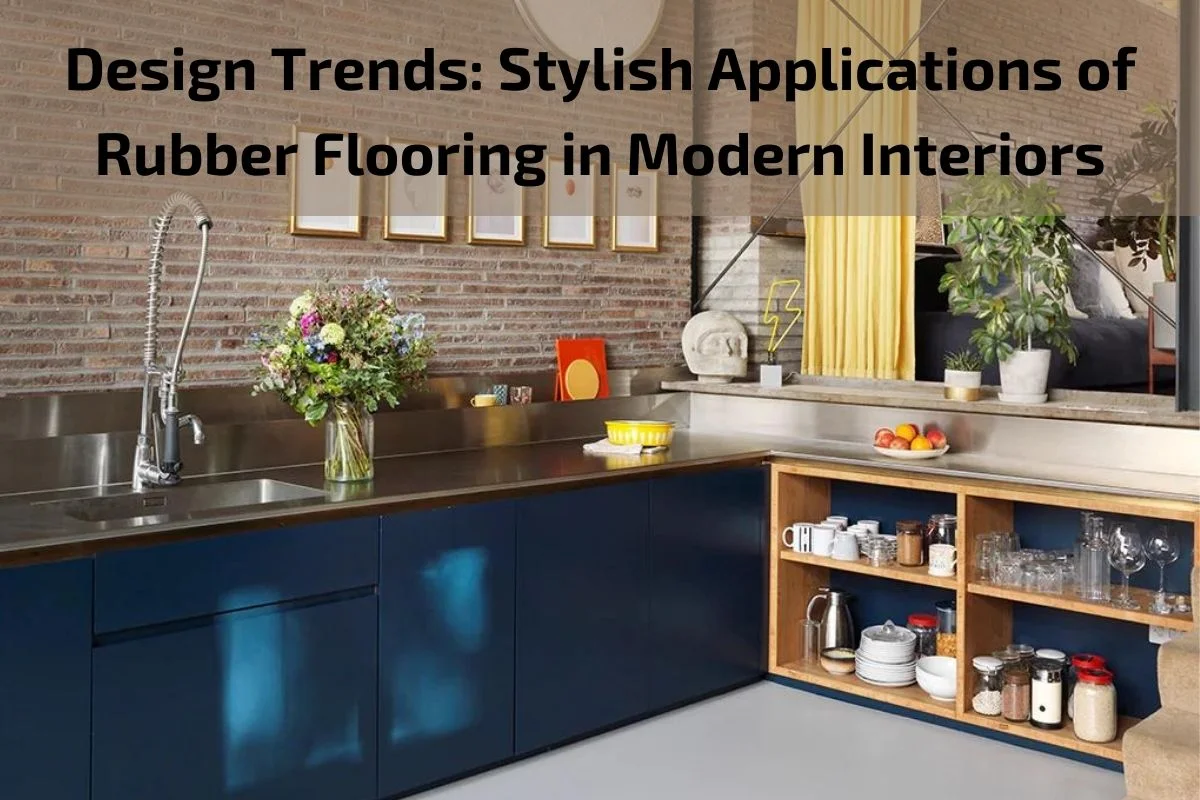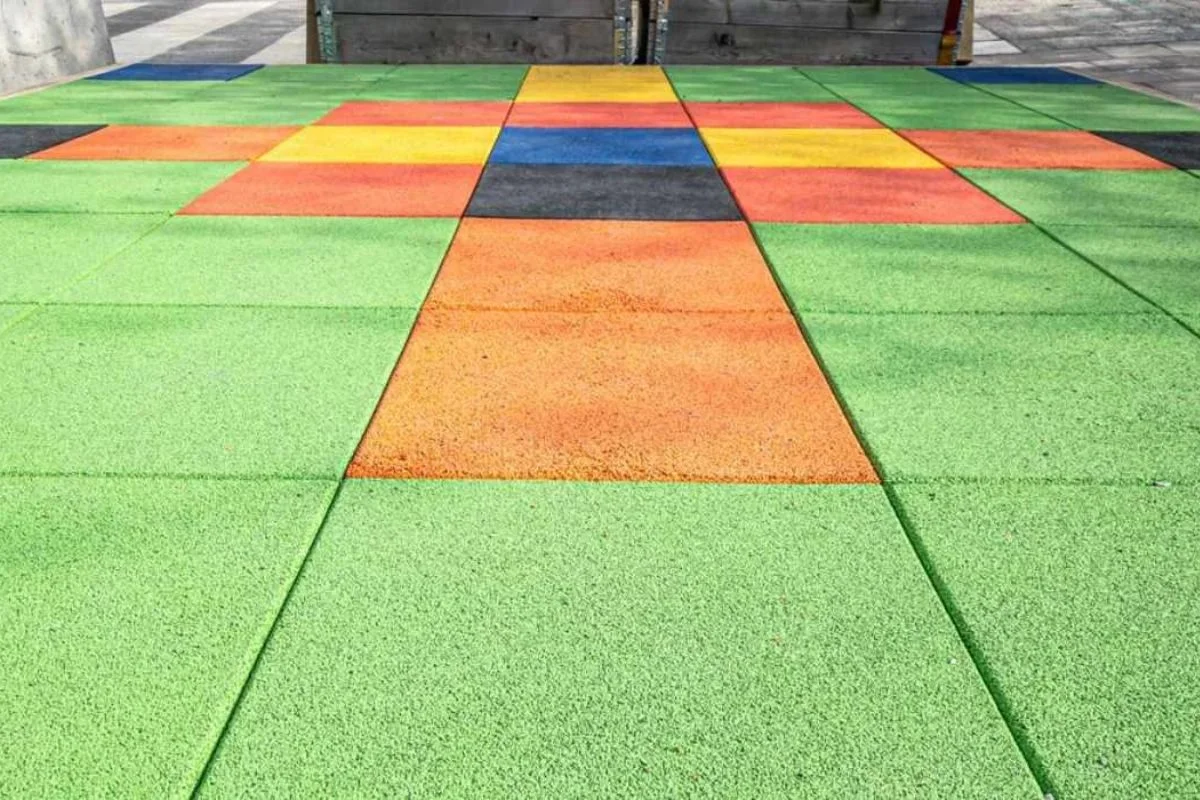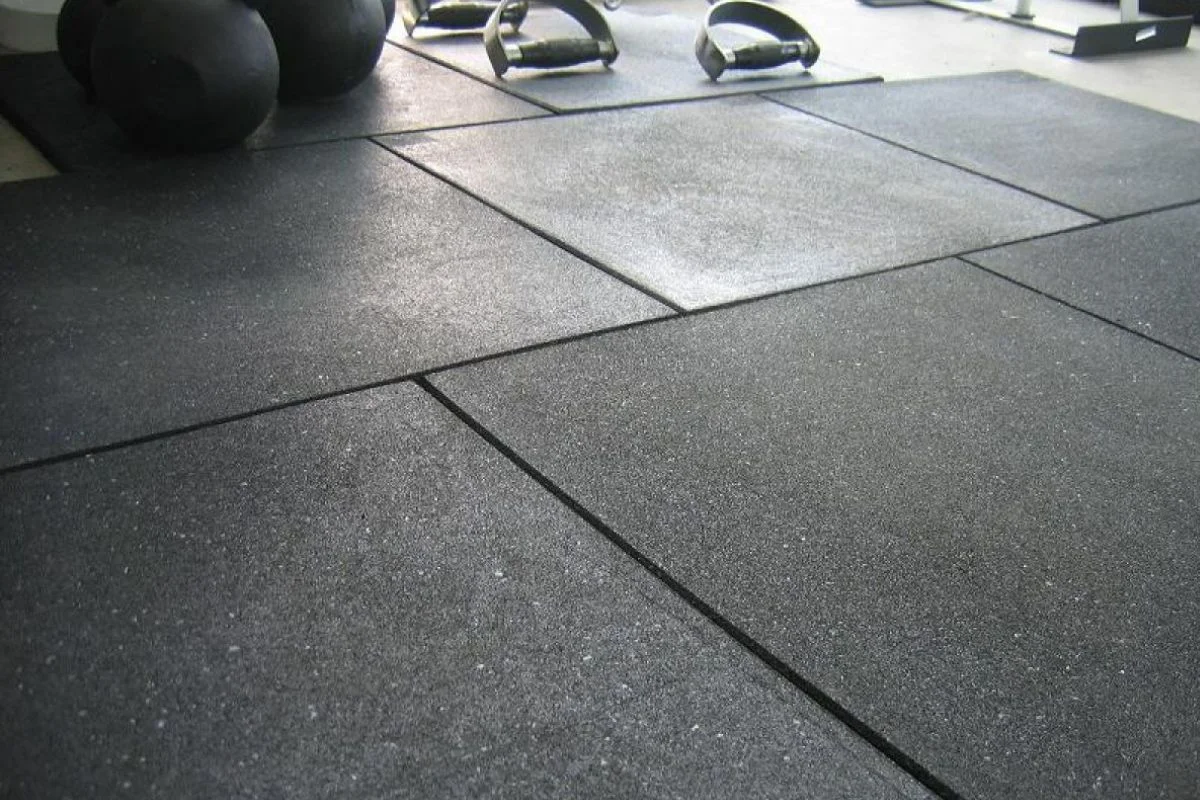
In the realm of interior design, flooring serves as the foundation upon which the entire aesthetic narrative of a space is built. With the evolution of design trends, the notion of what constitutes stylish flooring has expanded beyond traditional materials to encompass innovative options that blend form, function, and sustainability. Among these alternatives, rubber flooring has emerged as a versatile and stylish choice that is revolutionizing modern interiors.
Gone are the days when rubber flooring was relegated solely to industrial settings or gymnasiums. Today, designers and homeowners alike are embracing rubber flooring for its myriad benefits and its ability to seamlessly integrate into contemporary living spaces. From residential homes to commercial offices, rubber flooring offers a perfect blend of aesthetic appeal, durability, and versatility.
This article delves into the design trends shaping the stylish applications of rubber flooring in modern interiors. We’ll explore how this once utilitarian material has been reimagined to meet the demands of today’s discerning designers and homeowners, while simultaneously elevating the visual and functional aspects of interior spaces. Whether you’re seeking a sleek and minimalist look or a bold statement piece, rubber flooring offers endless possibilities to enhance the ambiance and character of any room.
Brief overview of Rubber Flooring
Rubber flooring has evolved from its industrial origins to become a popular choice for both residential and commercial spaces. Made from natural or synthetic rubber materials, this type of flooring offers a range of benefits that make it an attractive option for various applications.
Initially used primarily in high-traffic areas like gyms, hospitals, and schools due to its durability and resilience, rubber flooring has now found its way into homes, offices, and retail environments. Its versatility, combined with advancements in design and technology, has expanded its appeal to encompass a wide range of interior design styles and preferences.
Rubber flooring is known for its durability, shock absorption, and resistance to wear and tear, making it ideal for areas with heavy foot traffic or where impact resistance is important. It provides a comfortable and slip-resistant surface that enhances safety and comfort in spaces such as kitchens, bathrooms, and fitness facilities.
In addition to its practical benefits, rubber flooring offers aesthetic versatility with a variety of colors, patterns, and textures to choose from. Whether seeking a sleek, modern look or a more playful and vibrant atmosphere, rubber flooring can be customized to suit any design aesthetic.
Overall, rubber flooring is a durable, versatile, and stylish option that continues to gain popularity in both residential and commercial settings. Its combination of functionality, design versatility, and sustainability makes it a compelling choice for anyone looking to enhance their space with a flooring solution that is both practical and visually appealing.
Importance of Rubber Flooring in interior design
Rubber flooring holds significant importance in interior design, offering a range of benefits that contribute to both the aesthetic appeal and functionality of a space. Here are several reasons why rubber flooring is valued in interior design:
Durability and Resilience: Rubber flooring is highly durable and resilient, making it suitable for high-traffic areas and spaces prone to heavy use. Its ability to withstand wear and tear over time ensures that it maintains its appearance and functionality even in demanding environments.
Safety and Comfort: Rubber flooring provides a comfortable and slip-resistant surface, enhancing safety and comfort in residential, commercial, and public spaces. Its shock-absorbing properties help reduce the risk of slips, trips, and falls, making it an ideal choice for areas where safety is paramount.
Versatility in Design: With a wide range of colors, patterns, and textures available, rubber flooring offers versatility in design. It can be customized to complement various interior styles, from modern and minimalist to bold and eclectic, allowing designers and homeowners to achieve their desired aesthetic vision.
Sound Insulation: Rubber flooring acts as an effective sound insulator, reducing noise transmission between floors and rooms. This makes it particularly suitable for multi-level buildings, apartments, and commercial spaces where noise reduction is essential for occupant comfort and privacy.
Low Maintenance Requirements: Rubber flooring is easy to clean and maintain, requiring minimal upkeep to keep it looking its best. Its non-porous surface resists stains, spills, and dirt buildup, making it a practical choice for busy households and commercial settings where hygiene and cleanliness are priorities.
Environmentally Friendly: Many rubber flooring products are made from recycled materials, making them an environmentally friendly choice for eco-conscious consumers. Additionally, rubber flooring is long-lasting and recyclable at the end of its lifespan, reducing waste and environmental impact.
Adaptability to Various Spaces: Rubber flooring is suitable for a wide range of interior spaces, including kitchens, bathrooms, living areas, offices, retail stores, healthcare facilities, and educational institutions. Its versatility and durability make it a practical flooring solution for virtually any environment.

Benefits of Rubber Flooring
Rubber flooring offers a plethora of benefits that make it a preferred choice for both residential and commercial spaces. Here are some of the key advantages of rubber flooring:
Durability and Longevity: Rubber flooring is renowned for its durability and ability to withstand heavy foot traffic, making it ideal for high-traffic areas such as gyms, schools, and commercial facilities. It resists scratches, dents, and stains, ensuring that it maintains its appearance and functionality over time.
Comfort and Shock Absorption: One of the notable benefits of rubber flooring is its shock-absorbing properties, which provide a cushioned and comfortable surface to walk on. This makes it ideal for spaces where prolonged standing or impact resistance is required, such as kitchens, fitness centers, and play areas.
Slip Resistance: Rubber flooring is naturally slip-resistant, reducing the risk of slips, trips, and falls in both wet and dry conditions. This feature enhances safety in residential, commercial, and public environments, making it a popular choice for areas where safety is a priority.
Sound Insulation: Rubber flooring acts as an effective sound insulator, absorbing impact noise and reducing sound transmission between floors and rooms. This makes it an ideal choice for multi-level buildings, apartments, offices, and educational facilities where noise reduction is important for occupant comfort and privacy.
Easy Maintenance: Rubber flooring is easy to clean and maintain, requiring minimal upkeep to keep it looking its best. Its non-porous surface resists stains, spills, and dirt buildup, making it a practical choice for busy households and commercial settings where hygiene and cleanliness are priorities.
Versatility in Design: With a wide range of colours, patterns, and textures available, rubber flooring offers versatility in design. It can be customised to complement various interior styles, from modern and minimalist to bold and eclectic, allowing designers and homeowners to achieve their desired aesthetic vision.
Environmentally Friendly: Many rubber flooring products are made from recycled materials, making them an environmentally friendly choice for eco-conscious consumers. Additionally, rubber flooring is long-lasting and recyclable at the end of its lifespan, reducing waste and environmental impact.
Types of Rubber Flooring
Rubber flooring comes in various types, each offering unique features and benefits to suit different needs and preferences. Here are the main types of rubber flooring:
Sheet Rubber Flooring:
- Sheet rubber flooring is available in large rolls or sheets and is typically installed in one continuous piece.
- It offers seamless coverage and is ideal for larger areas where a uniform appearance is desired.
- Sheet rubber flooring is commonly used in commercial settings such as hospitals, schools, and fitness centers.
Rubber Tiles:
- Rubber tiles are individual tiles made from rubber material that can be easily installed and replaced.
- They come in a variety of sizes, thicknesses, and colors, allowing for creative design possibilities.
- Rubber tiles are suitable for both residential and commercial applications, including kitchens, bathrooms, and playrooms.
Interlocking Rubber Flooring:
- Interlocking rubber flooring consists of individual tiles or mats with interlocking edges that fit together like puzzle pieces.
- It offers quick and easy installation without the need for adhesives or special tools.
- Interlocking rubber flooring is commonly used in home gyms, garages, and workshops for its durability and shock-absorbing properties.
Rubber Rolls:
- Rubber rolls are long rolls of rubber flooring that can be cut to size and installed in various spaces.
- They provide seamless coverage and are often used in large commercial areas such as warehouses, factories, and sports facilities.
- Rubber rolls offer excellent durability, sound insulation, and slip resistance.
Recycled Rubber Flooring:
- Recycled rubber flooring is made from recycled rubber materials, such as old tires and rubber scraps.
- It is an eco-friendly option that helps reduce waste and environmental impact.
- Recycled rubber flooring is available in various types, including tiles, rolls, and interlocking mats.
Outdoor Rubber Flooring:
- Outdoor rubber flooring is designed specifically for outdoor use and is resistant to weather, UV rays, and moisture.
- It is commonly used in outdoor spaces such as patios, playgrounds, and pool decks for its durability and slip resistance.
Installation Tips for Rubber Flooring
Installing rubber flooring requires attention to detail and proper techniques to ensure a successful and long-lasting installation. Here are some installation tips for rubber flooring:
Prepare the Subfloor: Ensure that the subfloor is clean, dry, and free of debris before installing rubber flooring. Remove any existing flooring materials and adhesive residues, and repair any cracks or uneven areas to create a smooth and level surface.
Acclimate the Rubber Flooring: Allow the rubber flooring materials to acclimate to the room’s temperature and humidity for at least 48 hours before installation. This helps prevent expansion or contraction of the rubber during installation and ensures a more stable finished floor.
Use the Right Adhesive: Select a high-quality adhesive that is recommended for rubber flooring installation. Follow the manufacturer’s instructions for proper application and coverage to ensure a strong and durable bond between the rubber and the subfloor.
Install According to Manufacturer Guidelines: Follow the manufacturer’s guidelines and recommendations for installing the rubber flooring materials. Pay attention to directionality, pattern alignment, and seam placement to achieve a professional-looking installation.
Allow for Expansion Joints: Leave expansion joints around the perimeter of the room and at regular intervals throughout the floor to accommodate any movement or expansion of the rubber flooring materials. Use spacers or transition strips to maintain consistent spacing between the flooring and walls or other surfaces.
Trim and Finish Edges: Trim the rubber flooring materials to fit around obstacles, doorways, and irregularly shaped areas using a utility knife or heavy-duty scissors. Use transition strips or edge trim to finish the edges and provide a clean and professional-looking transition between the rubber flooring and adjacent surfaces.
Roll and Press the Flooring: After installation, use a hand roller or weighted roller to firmly press the rubber flooring materials into the adhesive and ensure good contact with the subfloor. This helps eliminate air pockets and ensures a secure bond between the rubber and the subfloor.
Allow Proper Cure Time: Allow the adhesive to fully cure according to the manufacturer’s recommendations before allowing foot traffic or placing heavy objects on the newly installed rubber flooring. This typically requires 24 to 48 hours, depending on the type of adhesive used and environmental conditions.

Maintenance and Care for Rubber Flooring
Maintaining and caring for rubber flooring is relatively straightforward and requires regular cleaning and preventive maintenance to preserve its appearance and longevity. Here are some maintenance and care tips for rubber flooring:
Regular Cleaning Routine: Establish a regular cleaning routine to remove dirt, dust, and debris from the surface of the rubber flooring. Sweep or vacuum the floor regularly to prevent dirt buildup and maintain its appearance.
Use a Mild Cleaner: Use a mild detergent or soap solution diluted in water to clean the rubber flooring surface. Avoid harsh chemicals, abrasive cleaners, or solvents that can damage the rubber material or cause discoloration.
Spot Cleaning Spills and Stains: Promptly clean up spills and stains on the rubber flooring surface using a damp cloth or mop. Avoid allowing spills to sit for extended periods, as they can become more difficult to clean and may cause staining or discoloration.
Avoid Excessive Moisture: While rubber flooring is water-resistant, excessive moisture can lead to mold and mildew growth, especially in areas with high humidity or moisture levels. Wipe up any spills or water immediately and ensure proper ventilation in the room to prevent moisture buildup.
Protect from Heavy Furniture: Use furniture pads or coasters under heavy furniture legs to prevent indentations or damage to the rubber flooring surface. Avoid dragging heavy furniture across the floor, as it can scratch or scuff the surface.
Preventive Maintenance: Place walk-off mats or rugs at entryways to trap dirt, grit, and moisture from shoes before it reaches the rubber flooring surface. This helps prevent abrasion and reduces the need for frequent cleaning and maintenance.
Avoid Sharp Objects: Avoid using sharp or abrasive objects on the rubber flooring surface, as they can cause scratches or cuts. Use caution when moving or handling sharp objects to prevent damage to the flooring material.
Periodic Deep Cleaning: Periodically deep clean the rubber flooring surface using a commercial rubber floor cleaner or a solution of mild detergent and water. Follow the manufacturer’s recommendations for cleaning and maintenance to avoid damaging the rubber material.
Inspect for Damage: Regularly inspect the rubber flooring for signs of damage, wear, or deterioration. Repair any cracks, tears, or damaged areas promptly to prevent further damage and maintain the integrity of the flooring surface.
Maintenance and Care for Rubber Flooring
Maintaining and caring for rubber flooring is essential to preserve its durability, appearance, and functionality over time. Here are some key maintenance and care tips for rubber flooring:
Regular Cleaning Routine: Establish a regular cleaning schedule to remove dirt, dust, and debris from the rubber flooring surface. Sweep or vacuum the floor regularly to prevent buildup and maintain its appearance.
Use Gentle Cleaning Solutions: Use mild soap or detergent diluted in water to clean the rubber flooring surface. Avoid harsh chemicals or abrasive cleaners that can damage the rubber material. Test any cleaning solution in a small, inconspicuous area before applying it to the entire floor.
Spot Cleaning for Spills and Stains: Promptly clean up spills and stains on the rubber flooring surface using a damp cloth or mop. Avoid allowing spills to sit for too long, as they can become more difficult to clean and may cause staining.
Avoid Excessive Moisture: While rubber flooring is water-resistant, excessive moisture can lead to mould and mildew growth. Wipe up spills promptly and avoid using excessive water when cleaning the floor. Ensure proper ventilation in the room to prevent moisture buildup.
Protect from Heavy Furniture: Use furniture pads or coasters under the legs of heavy furniture to prevent indentations or damage to the rubber flooring surface. Avoid dragging heavy furniture across the floor, as it can cause scratches or scuffs.
Preventive Measures: Place mats or rugs at entryways to trap dirt and grit from shoes before it reaches the rubber flooring. This helps reduce the amount of debris that accumulates on the floor and minimises the need for frequent cleaning.
Avoid Sharp Objects: Be cautious with sharp or abrasive objects on the rubber flooring surface, as they can cause scratches or cuts. Use gentle cleaning tools and avoid using abrasive scrubbers or brushes.
Periodic Deep Cleaning: Periodically deep clean the rubber flooring using a commercial rubber floor cleaner or a solution of mild detergent and water. Follow the manufacturer’s recommendations for cleaning and maintenance to avoid damaging the rubber material.
Regular Inspections: Regularly inspect the rubber flooring for signs of damage, wear, or deterioration. Repair any cracks, tears, or damaged areas promptly to prevent further damage and maintain the integrity of the flooring surface.
conclusion
In conclusion, proper maintenance and care are essential for preserving the longevity, appearance, and functionality of rubber flooring. By implementing a regular cleaning routine, using gentle cleaning solutions, and taking preventive measures, you can keep your rubber flooring looking its best for years to come.



